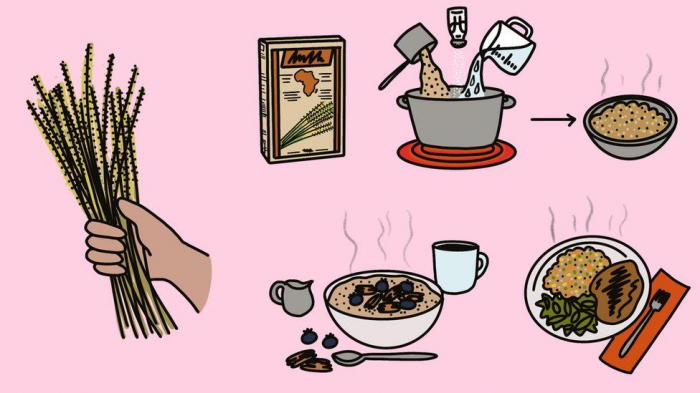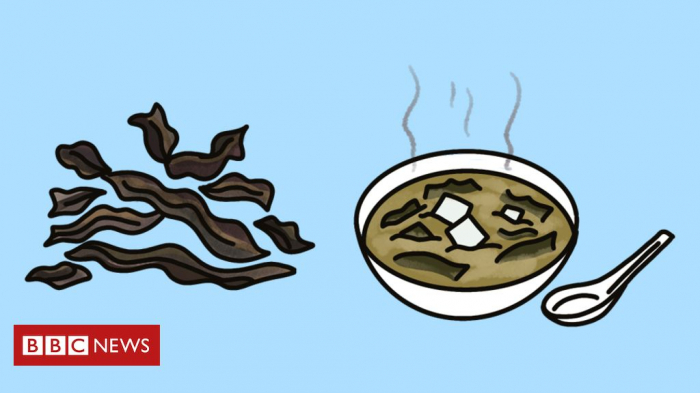Once a staple mainly eaten in Bolivia and Peru, quinoa has now become a familiar food across the globe - so what other healthy foods are waiting to be discovered?
A new report lists 50 so-called future foods which are both healthy and good for the environment. So which "super" foods are on the menu of the future?
Moringa

The Moringa tree is often referred to as "the miracle tree" - it's fast-growing and drought-resistant and in its native south Asia many parts of the tree are used in Ayurvedic medicine.
The leaves can be harvested up to seven times a year and contain vitamins A and C and minerals like calcium and potassium. They are often added to clear broths.
In the Philippines and Indonesia, it is common to cut the long seed pods - known as "drumsticks" - into shorter lengths to be stewed in curries and soups. These pods also contain seeds which are rich in oleic acid which has been linked to higher levels of "good" cholesterol in the body.
The leaves can be ground into a powder to be used in smoothies, soups, sauces and teas.
Priya Tew, a dietitian and media spokesperson from the British Dietetic Association, knows it well. "A favourite in my family food history, eaten as part of a curry in Sri-Lanka, You scrape the inside out with your teeth and suck the sauce off."
Wakame

In Japan Wakame seaweed has been cultivated for centuries by sea farmers for human food - but offerings of it were made to the spirits of ancestors and even taxes were paid in seaweed.
Nowadays it's also grown in sea fields in France, New Zealand and Argentina. It can be harvested all year round - without using fertilisers or pesticides - and dried in the sun.
The dried seaweed adds a delicious, salty umami flavour to food and it's also one of the few plant-based sources of eicosapentaenoic acid - the omega 3 fatty acid which is almost exclusively found in fatty fish that feed on algae.
One of the softest brown seaweeds, Wakame also contains a large amount of fucoidan - a dietary fibre which has also shown potential in animal studies to lower blood pressure, to have anti-blood coagulation properties and even anti-tumour activity.
"Seaweeds can be a great source of iodine and omega 3's, especially for people eating less animal products. Great in a stir-fry, I ate this a lot in Hong Kong," says Priya Tew - but she also warns that "it is important to only eat a small amount each day so you don't get too much iodine, and also due the heavy metal content from the sea."
Nopales cactus

A common ingredient in Mexican cuisine the leaves, fruit and cladodes (flattened shoots rising from the stems of the plant) of Nopales or prickly pear can be eaten raw, cooked, or made into juice or jam.
It's easy to grow in Central and South America, Australia and even Europe.
Some clinical studies suggest that fibre from cacti helps the body to excrete more of the fat we eat - but any weight loss benefits are yet to be proven. Other trials suggested it can reduce blood sugar levels in people with Type 2 diabetes - and may even lessen unpleasant hangover symptoms.
Anyone wanting to try the prickly pear cactus might want to consider easing into it - some people experience side effects like mild diarrhoea, nausea and abdominal fullness.
Priya Tew comments: "Some interesting health claims, it is important to note these are unproven currently and there are side effects. I can see this sadly becoming a new health craze."
Fonio

This ancient African grain is known for its nutty, delicate taste which the Bambara people of Mali say "never embarrasses the cook" because it's so easy to prepare.
Dating back more than 5,000 years, there's evidence it was cultivated in ancient Egypt. There are black and white varieties of the drought-resistant cereal which grows in just 60 or 70 days in the dry Sahel region of west Africa.
Fonio's grains are as tiny as sand - and the inedible husk needs to be removed before it's eaten. Most of this is carried out by hand, but a new mill in Senegal could see the gluten-free grain exported all around the world when it is finished next year.
Rich in iron, zinc and magnesium, fonio can be used in place of couscous or rice or even used to make beer.
Priya Tew is keen: "A great sounding grain that I would love to try. I think this will be popular as it is gluten free and the fact it is drought-resistant makes it a good option for a future food with global warming. "
Bambara

It's a legume that tastes like a less oily, sweeter version of a peanut. The Bambara bean has caught the eye of sustainable food experts because it can grow in poor soil, making it more fertile by "fixing" nitrogen in the earth.
The traditional African legume is also grown in southern Thailand and parts of Malaysia and can be boiled, roasted, fried or milled into a fine flour.
In east Africa the beans are pureed to create a base for soups. It's known as a "complete food", as it's high in protein and a source of the essential amino acid methionine - which promotes the growth of new blood vessels and the absorption of zinc, which is needed for the body's immune system, and selenium, which helps regulate thyroid function and also plays a role in the immune system.
"This sounds like a food that could be great for people on a vegetarian, vegan or plant-based diet due to it being a complete protein source and being a sustainable crop," says Tew. "With the current issues we have facing the future of our food we need more easy to grow foods that are versatile like this. "
More about: Super-food
















































